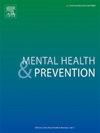使用网络分析识别LGBTQ+青少年心理健康的风险和保护因素
IF 2.4
Q2 Medicine
引用次数: 0
摘要
性别和性身份被边缘化的青年,或女同性恋、男同性恋、双性恋、跨性别、酷儿和/或质疑青年(LGBTQ+),由于社会环境的压迫,心理健康问题的风险更高。为了指导临床实践和解决LGBTQ+青年的健康差异,研究人员必须确定最可能影响心理健康的核心和有影响力的风险和保护因素。方法采用网络分析对明尼苏达州LGBTQ+青年的危险因素、保护因素、心理健康和个人身份(性别、性、种族和民族身份)之间的复杂关系进行建模(N = 24,400, Mage = 14.77, SD = 1.30)。使用RStudio中的qgraph,使用图形最小绝对收缩和选择算子模型选择来分析等级分层网络。使用具有相关性的邻接表作为输入数据。结果三个等级的网络在密度和中心性指标的总体模式上相似。基于偏见的欺凌变量(不分年级)和三个物质使用变量是跨网络的中心节点。学校安全和赋权是期望影响值最高的保护因素变量。结论基于偏见的欺凌对心理健康和其他危险因素有显著影响,与以往的研究结果一致。对预防心理健康问题的影响包括减少基于偏见的欺凌和药物使用,早期和准确识别心理健康问题的重要性,以及早期增加保护因素。本文章由计算机程序翻译,如有差异,请以英文原文为准。
Using network analysis to identify risk and protective factors for mental health in LGBTQ+ youth
Objective
Youth with marginalized gender and sexual identities, or lesbian, gay, bisexual, transgender, queer, and/or questioning youth (LGBTQ+) are at heightened risk for mental health concerns due to oppressive social contexts. To guide clinical practice and address health disparities for LGBTQ+ youth, researchers must identify central and influential risk and protective factors that have the greatest potential to affect mental health.
Method
Network analysis was used to model the complex relationships between risk factors, protective factors, mental health, and personal identities (gender, sexual, and racial and ethnic identities) among LGBTQ+ youth in a large statewide cross-sectional dataset from Minnesota (N = 24,400, Mage = 14.77, SD = 1.30). Grade-stratified networks were analyzed using qgraph in RStudio with Graphical Least Absolute Shrinkage and Selection Operator model selection. Adjacency tables with correlations were used as the input data.
Results
The three grade networks were similar in density and overall pattern of centrality metrics. Bias-based bullying variables, regardless of grade, and three substance use variables were central nodes across networks. School safety and empowerment were the protective factor variables with the highest expected influence values.
Conclusions
Results indicate that bias-based bullying has a significant impact on mental health and other risk factors, replicating previous studies. Implications for prevention of mental health concerns include reducing bias-based bullying and substance use, the importance of early and accurate identification of mental health concerns, and increasing protective factors early on.
求助全文
通过发布文献求助,成功后即可免费获取论文全文。
去求助
来源期刊

Mental Health and Prevention
Medicine-Psychiatry and Mental Health
CiteScore
2.10
自引率
0.00%
发文量
22
审稿时长
24 days
 求助内容:
求助内容: 应助结果提醒方式:
应助结果提醒方式:


